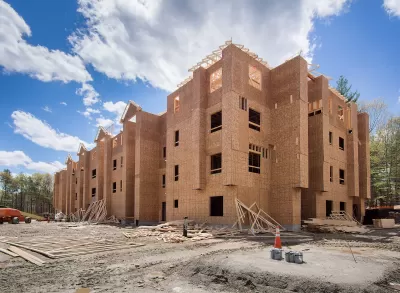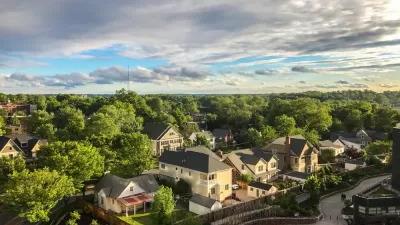A combination of ineffective funding mechanisms, strict building regulations, and inflation are pushing per-unit construction costs higher.

Writing in Crain’s Chicago Business, Judith Crown explains the various factors behind the high cost of affordable housing construction.
According to Crown, “Costs are driven by the byzantine rules of the federal tax credit system that require builders to assemble a ‘capital stack’ of funders, each with sets of fees and requirements. On top of that comes ever more rigorous government standards for accessibility, sustainability and design.”
Additionally, federal resources dedicated to affordable housing have not kept up with inflation, and the complex tax credit funding system comes with “incredibly high transaction costs.” Some experts say it would cost far less if the federal government directly subsidized affordable housing construction.
Per-unit costs sometimes increase due to the addition of new infrastructure, but improvements such as new sidewalks can help make a housing development a vehicle for broader revitalization in the surrounding neighborhood. Modern affordable housing is also designed to blend in. “Planners want to get away from the institutional design of infamous public housing projects, such as the Robert Taylor Homes and Cabrini-Green. While these 1960s-era buildings aren't directly comparable to today's scaled-down affordable projects, there's a priority to design buildings that look like they're part of the neighborhood, architects say.”
FULL STORY: The high cost of creating affordable housing

Maui's Vacation Rental Debate Turns Ugly
Verbal attacks, misinformation campaigns and fistfights plague a high-stakes debate to convert thousands of vacation rentals into long-term housing.

Planetizen Federal Action Tracker
A weekly monitor of how Trump’s orders and actions are impacting planners and planning in America.

In Urban Planning, AI Prompting Could be the New Design Thinking
Creativity has long been key to great urban design. What if we see AI as our new creative partner?

Sean Duffy Targets Rainbow Crosswalks in Road Safety Efforts
Despite evidence that colorful crosswalks actually improve intersection safety — and the lack of almost any crosswalks at all on the nation’s most dangerous arterial roads — U.S. Transportation Secretary Duffy is calling on states to remove them.

‘Architectural Epidemiology:’ Centering Public Health in Urban Design
A new book asks, what if cities were designed around health equity?

Study: London Low-Traffic Neighborhoods See 35% Drop in Road Injuries
London’s effort to reduce speeds and limit vehicles in parts of the city are contributing to improved road safety.
Urban Design for Planners 1: Software Tools
This six-course series explores essential urban design concepts using open source software and equips planners with the tools they need to participate fully in the urban design process.
Planning for Universal Design
Learn the tools for implementing Universal Design in planning regulations.
Gallatin County Department of Planning & Community Development
Heyer Gruel & Associates PA
JM Goldson LLC
Mpact (founded as Rail~Volution)
City of Camden Redevelopment Agency
City of Astoria
City of Laramie
Jefferson Parish Government
Camden Redevelopment Agency




























